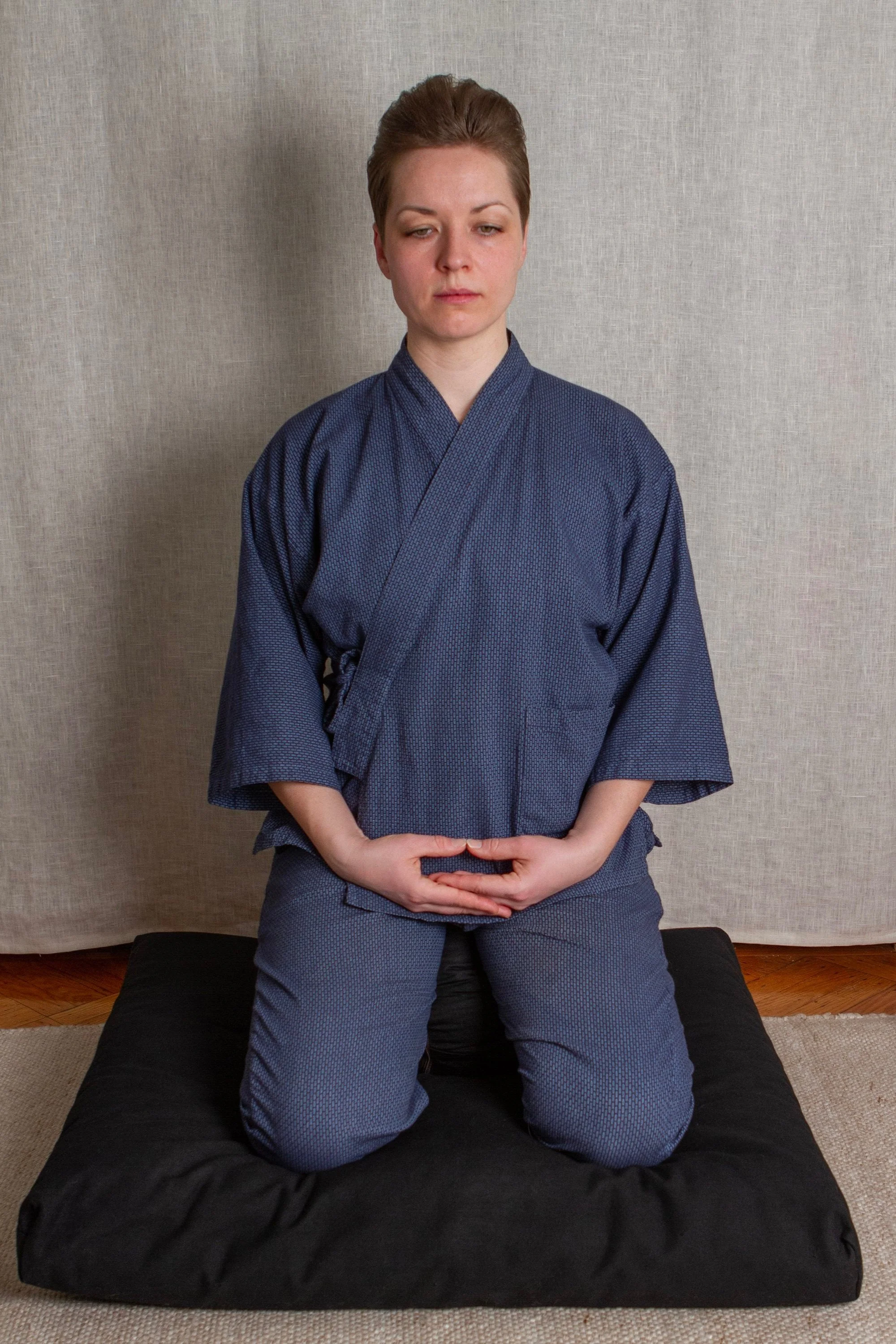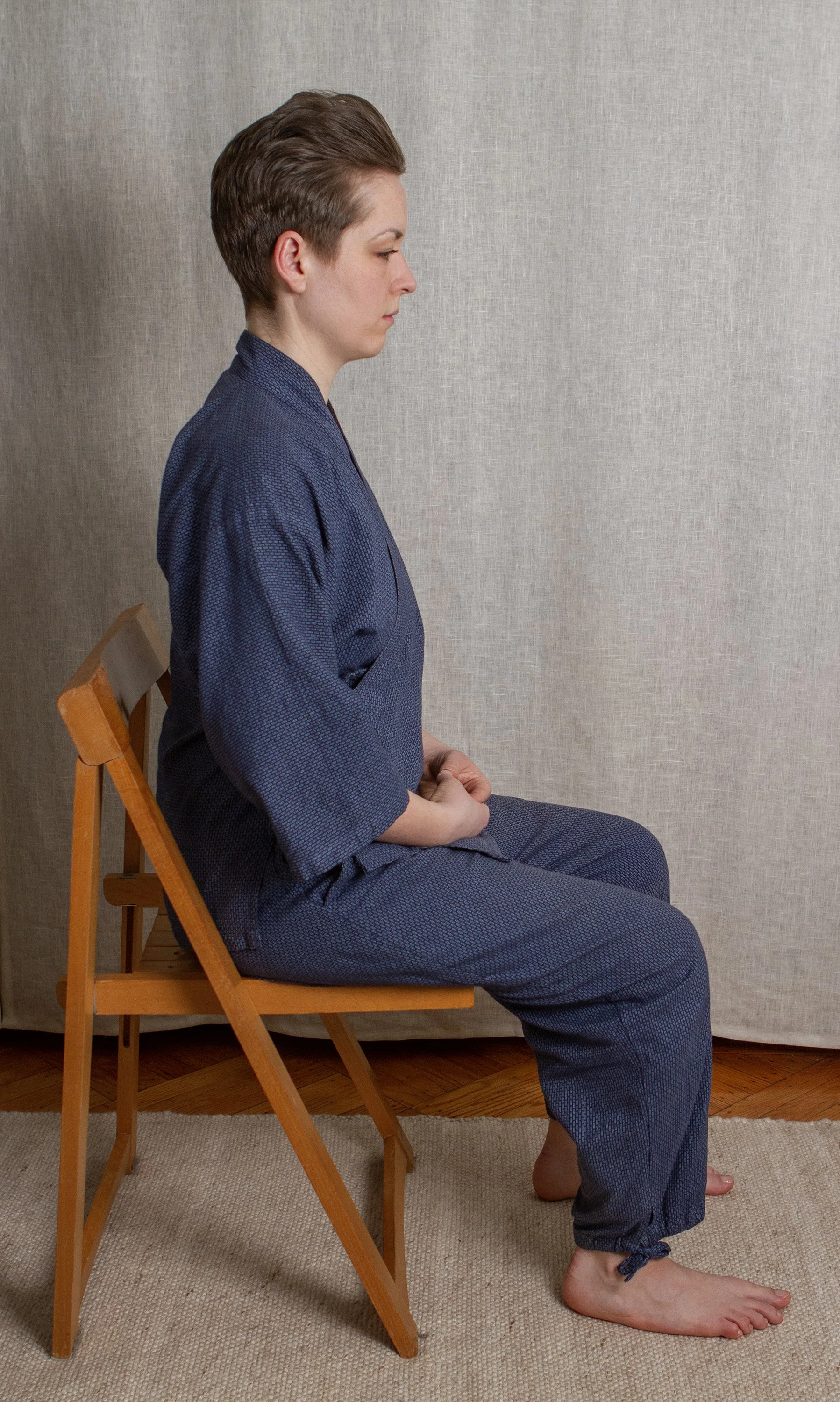How To Begin - Zazen Instruction
“The journey of a thousand miles begins with a single step.” - Lao Tzu
The most vital aspect of any spiritual quest is having the courage to begin. At Eiryu-ji Zen Center, we take the time to warmly welcome all newcomers and to give each person individualized guidance and support. If you would like to explore Zen practice, please contact us prior to your visit, so we can arrange a specific time to welcome you and to review basic instructions.
Please see the following instructional video on how to do Zen meditation:
Basic Instructions for Zazen
Zazen means sitting meditation. It is the simple and profound practice of deep observation, free from the burden of specific goals and expectations. During a meditation period the intention is to presence and neutrally observe all experiences as they arise, while maintaining an open sense of awareness. This means to silently witness the arising thoughts, emotions, sensations, sounds, scents, and sights, allow them to stay as long as they may, and let them subside on their own accord. Basic Zazen guidelines consists of three aspects:
1) Posture.
2) Breath.
3) Working with the mind.
Posture
The posture of the body is a foundational ingredient in the formation of a supportive structure for the practice. Correct and upright posture contributes to the creation of optimal conditions for the cultivation of a supple and alert state of being.
Traditionally, Zazen is practiced in a crossed legged position, while sitting on a set of cushions known as Zafu and Zabuton. A second sitting option is Seiza, which is a kneeling position. In this position you may sit on a Zafu (round cushion), or on a special kneeling bench known as a Seiza bench. Note that in a crossed legged position or kneeling, the hips need to be higher than the knees. If neither one of these options is possible, you may sit on a chair while maintaining a straight back and keeping the feet flat on the ground.
With palms up, place the left hand on top of the right hand, resting both on your thighs in front of your center. Your thumbs should touch lightly, as if you are holding a piece of paper between them. This hand position is known as the Cosmic Mudra. Keep the lips in a gently closed position, and place the tongue against the roof of the mouth, behind the front upper teeth. Swallow once while keeping the mouth closed. This creates a partial vacuum in the mouth and it will reduce the production of saliva, thus minimizing the need to swallow as often. The eyes remain slightly open, gazing downwards without tilting the head forward. If the air in the room is dry and the eyes become irritated, you can closed them for a bit and then re-open. During a sitting period remain fully aware of your body and its surroundings.
Breath
During Zazen breath awareness is the anchor of our attention. At the beginning stages of cultivating the practice it is very important to maintain breath awareness throughout a sitting period. When the attention drifts away and you become engaged with thoughts or sensations, gently bring it back to the breath.
Breathing is a naturally occurring physiological process which does not require volitional thinking process. Beyond the purpose of oxygenating the body and removing carbon dioxide, this natural process is also closely related to our state of being. By becoming aware of the breathing process, we can experience how fluctuations in our state of being effect the quality of our breath. As we observe our breathing in and breathing out, we can easily notice that it becomes deep and long when we feel at ease, and shallow and fast when we feel stressed. Since this mind-body-breath connection works in both directions, we can change our state of being by taking charge of the way we breathe.
After easing into the sitting position and aligning you posture, focus the attention on your breath and discern which of the following qualities describe it: Slow or Fast, Deep or Shallow, Long or Short, Smooth or Coarse, Even or Choppy. Work with your breathing process and aim towards making it Slow, Deep, Long, Smooth, and Even.
Breathing Techniques
During the initial stage of cultivating a meditation practice Since it is advisable to use a breathing technique. It is also useful to use breathing techniques at times when the thoughts or physical sensations seem overwhelming. Here are four suggestions you can work with:
Counting exhalations: While breathing evenly and naturally, count the only the exhalations from 1 to 10. Do so silently, and repeat this cycle continuously during the Zazen period. If you loose the count simply begin counting again.
Bamboo breathing: Take a deep breath and exhale a bit of air, then hold your breath for a couple of seconds, exhale some more and hold, exhale more and hold. Keep going until you empty out your lungs using 6-8 stops through one exhalation. This technique may be used 2-3 times during a meditation period, or as needed throughout the day.
Square breathing: Inhale slowly as you count from 1 to 6, then exhale slowly as you count from 1 to 6. This technique may be used occasionally during a meditation period, or as needed throughout the day, as often as you like.
Holding the breath: Inhale slowly and fill your lungs with as much air as you can, hold your breath while counting from 1 to 8, then exhale slowly. This technique may be used as needed throughout the day, as often as you like.
Sustaining breath awareness throughout the day can have a deeply transformative effect on the way we encounter everyday challenges, improve our ability to ride the currents of life, and enhance our sense of gratitude and appreciation.
Working With The Mind
Our capacity to think is a powerful ability which, when harnessed and used correctly, can be very beneficial. However, much of the thinking process we experience throughout the day is non-volitional, ongoing, and often not so relevant to what we encounter. When this process is left unexamined, it can potentially lead to harmful speech and actions. While meditating, the intention is to become acutely aware of thoughts, emotions, sensations, and learn how not to follow them.
During meditation you will naturally encounter arising and vanishing thoughts, appearing out of nowhere, and disappearing back into the nowhere they came from. While being immersed in stillness and silence, learn to ride the ebb and flow of the breath, and observe the thoughts without being engaged with them. When a thought comes, allow it to be, without adding inner commentaries, judgments, interpretations, or analysis.
Recognize that you are always surrounded by a vast space that has the capacity to hold an infinite number of thoughts and emotions. When you get hooked by a thought and realize that you have embarked on a chain-thinking journey, gently return to the physical aspect of your being, and rest in your posture and your breath. Your anchored seated position is the post from which you learn to unconditionally observe the arising and vanishing of thoughts, emotions, memories, physical sensations, and all other experiences.
- Further personal guidance is offered by Roshi Junryu and senior members of Eiryu-ji.










